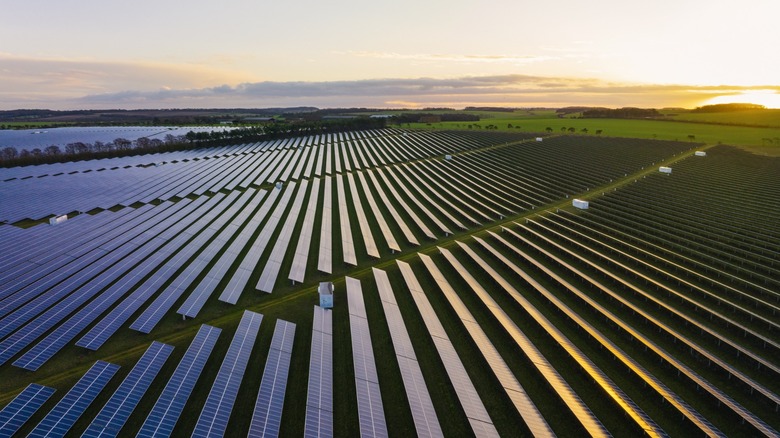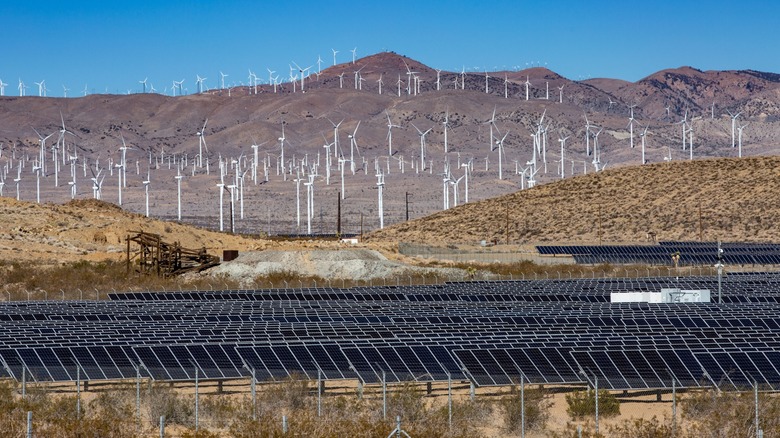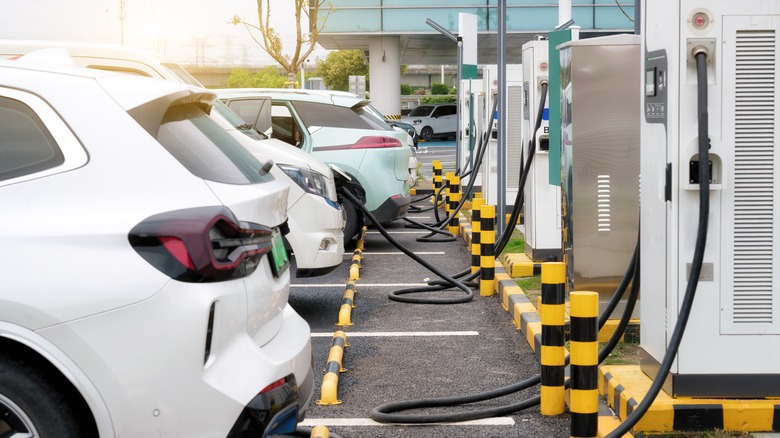This Project Could Help Solve California's Biggest Solar Problem — And Set A New Record
California is considered one of the most sustainable states in the U.S., boasting a high percentage of electric and hybrid vehicles as well as several government projects to help combat and deal with climate change. This includes the construction and installation of countless solar panels that deliver over 49,000 megawatts of green energy, supplying almost a third of the state's electricity. However, even this is not enough to reach its climate and energy goals. One major problem is that the largest state in the union still relies mostly on nonrenewable energy sources at night.
One of the common myths about solar panels is that they don't work in cloudy weather, but this isn't true. A decent amount of sunlight still gets through overcast skies and can generate some power. However, no solar energy is created when the sun is completely absent from dusk until dawn. One way around this issue is to store excess energy produced during the day in specialized batteries, which can then provide electricity at night. One thing to consider before installing a home battery is that you can even do this yourself, tapping into stored power at peak times when using electricity from the grid costs more.
Currently, only a small amount of the energy produced by California's solar panels during the day gets stored for use at night. But that may all change, as California officials have fast-tracked the approval of a new battery storage facility in Fresno County. Called the Darden Clean Energy Project (DCEP), the new installation — which will be built alongside a solar farm — will be the largest battery storage facility ever built anywhere in the world.
California's Darden Clean Energy Project will reuse dried-up farmland
The Darden Clean Energy Project hasn't started yet, having only been approved by the California Energy Commission on June 11, 2025. California is already home to the largest battery storage facility, which is located in Kern County, near Bakersfield. The DCEP, if built as currently planned, will be even bigger and equipped with around 3.1 million solar panels. The battery section of the project would utilize Tesla Megapack 2 XL batteries that collectively could store enough electricity to power 850,000 homes for four hours.
Presumably, this power would mostly be used at night when the solar panels are unable to produce new energy. The state can also tap into this stored energy if the power grid faces higher demand, such as when more users turn on air conditioning units during a heatwave. In addition to the ability to add and store more clean energy to the grid, the DCEP will be built on defunct agricultural land, making it even more sustainable.
The proposed site of the solar facility is near Cantua Creek, located in central California. The land was once fertile and a good source of agricultural products, but droughts (some undoubtedly exacerbated by climate change) and overfarming have left the soil dry and alkaline, making it considerably less productive. Since it's already been farmed, the 9,500-acre area is not considered wild or home to as much wildlife as public land, making it very suitable for the installation and giving it a productive second life. It also won't affect food and crop production as much as a one built on land with more fertile soil.
The Darden Clean Energy Project isn't limited to solar energy
The DCEP is part of California's big push toward sustainability and the use of as much clean energy as possible in the face of increasing global temperatures and other effects of climate change. The massive new solar facility is a big step toward the state achieving its lofty goal of transitioning to 100% clean electricity by 2045. To reach these tight deadlines, the DCEP was approved after an environmental review that lasted just 270 days as part of a program to fast-track vitally important projects.
Along with the solar panels and batteries to be built in Fresno County, the DCEP is also planning to provide benefits to the local community, which was necessary for approval. This includes 2,000 new construction jobs to build the solar facility and $2 million in investments over the next decade to nonprofits such as the Centro La Familia Advocacy Services, which supports family wellness, civic engagement, and crime victims in rural areas. The DCEP is also estimated to boost the local economy by $169 million over the next 35 years.
Once completed, the DCEP will add to California's 15,700-plus megawatts of battery storage capacity. California doesn't just lead other U.S. states in this regard, either; it's second only to China globally. Other ways California is aiming to reach its sustainability goals include incentivizing the use of EVs and hybrids, which, combined with the state's stricter emissions standards, means that California can boast the best potential average mpg in the U.S. As more EVs and hybrids get their power from the state's solar facilities, California's carbon footprint will decrease even further.


